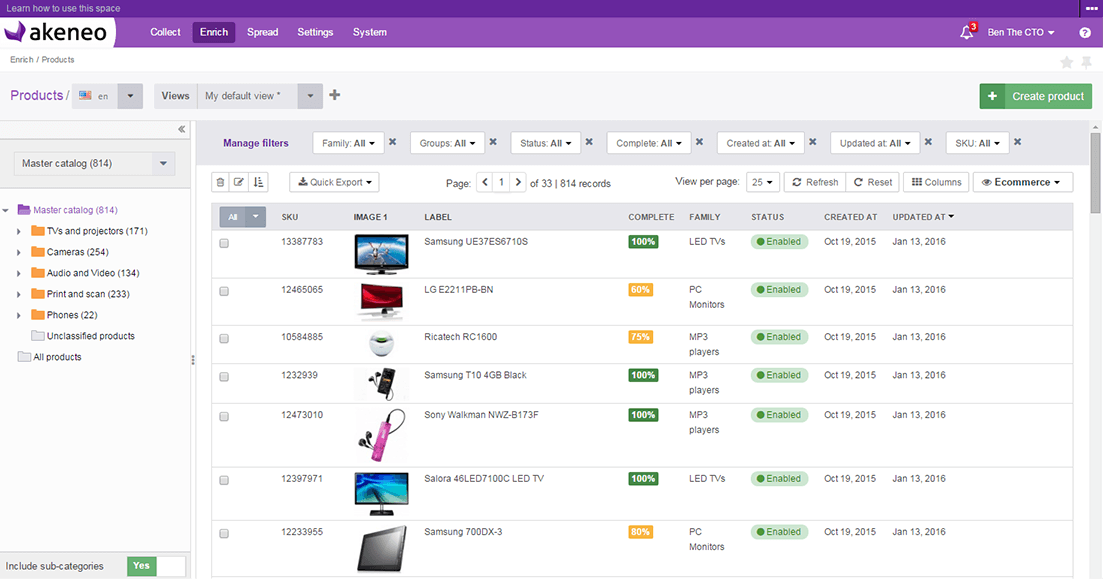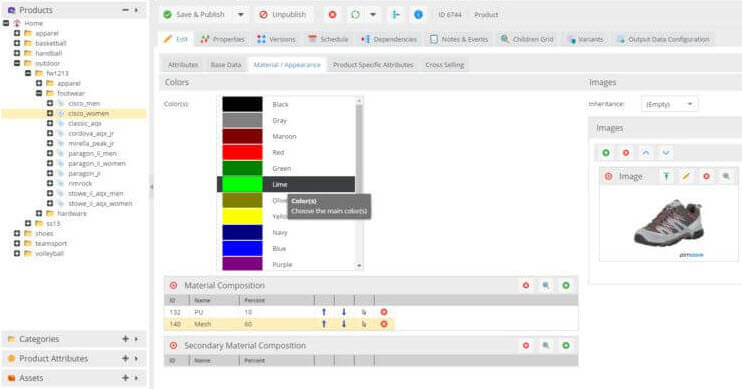Is managing your Magento store’s product catalog becoming tedious? Is your product data inconsistent? It may be time to invest in catalog management.

Catalog management is important on both sides: the customer and the merchant. Customers want to see product information that helps them decide whether they want to purchase a product. On the merchant end, a well-managed product catalog can make life a lot easier and promote sales. Robust product data also improves SEO.
So what do the results of catalog management look like? Good product catalogs have detailed, clear descriptions with the correct product attributes. Similar products are grouped together in easy to understand categories. The product catalog may also be frequently updated or added to, strengthening the need for consistency.
Luckily, there are many solutions out there that can suit varying business needs.
December 2024 Offer – For a Limited Time Only:
Get All Access Pass Package for Magento 2 for 25% off! Don’t miss out!
Why Use a PIM or ERP?

When an online retailer sells a high number of products, especially if they are managing multiple sellers in a marketplace, investing in a catalog management solution is a key to success. At this level, it becomes nearly impossible to keep track of all product data in an Excel spreadsheet and make sure it is uploaded correctly to the store.
Many ecommerce businesses running on Magento require a much more robust solution in the form of an added extension or outside software. For mid- to large businesses, the default Magento product management capabilities cause inefficiency. It can become difficult to manage a store with many products, multiple vendors, and a constantly changing catalog.
A solution, such as an ERP or PIM, centralizes data and automatically updates product information to ensure it is high-quality. Instead of having separate channels for different aspects of a business, these solutions allow users to view and manage multiple aspects of their store in one place. It can also be used to publish accurate product data to many different selling platforms, such as Amazon and Ebay.
Choosing Ecommerce Catalog Management Software

When it comes to picking a solution for catalog management, there are several factors to consider:
- Expense
- Time to Implement
- Capabilities
Some solutions are more expensive and take a significant amount of time to implement, but come with more features for businesses. Others are more bare-bones and involve a shorter time to implementation.
Choosing a strategy for catalog management means weighing these three factors and decide which solution is able to fit your business’ needs.

ERP vs. PIM
If you’re looking for a robust solution for managing a Magento product catalog, you’ll end up choosing an ERP or PIM.
Product Information Management (PIM) involves software that allows retailers to manage product data. Enterprise resource planning (ERP) involves management of core business processes. This provides one place for merchants to manage various aspects of finance, shipping, production, etc.
In some cases, PIM may already be embedded in ERP. Other businesses choose to have separate ERP and PIM solutions.
This is because PIM and ERP are good at managing different types of product data. PIM solutions are able to take on more detailed product information such as product descriptions and media. A PIM system is also great for translations.
In contrast, ERP are often more generalized business solutions and may not include as robust catalog management features.
Both ERP and PIM solutions can be connected to Magento via pre-made extensions.
Cloud-Based vs. Installed
When it comes to choosing a catalog management solution, merchants can choose from cloud-based or installed (on-premise) software. Catalog management is trending toward cloud-based solutions for several reasons.
Cloud-based software lowers costs and requires less IT infrastructure on the merchant’s end. This software also tends to have scalable features.
5 Excellent Catalog Management Solutions
There are many options available for improving ecommerce catalog management. The following are some top-rated options, in no particular order:
1. Akeneo PIM

Akeneo is a PIM solution allows merchants to easily manage and view all product data to create a consistent product catalog. It takes data from Excel files, supplier systems, and third-party ERP systems. Merchants can then enrich this product data and export completed product information to Magento. Data can also be exported to other platforms, including Amazon.
This PIM comes with handy tools to make sure all product information is complete and ensure consistency.

Akeneo PIM product grid allows you to organize and classify
Akeneo has an open source community edition, as well as a paid enterprise version with expanded features.
2. Oracle

Oracle is a top company in the world of business solutions an offers installed and cloud-based ERP and PIM solutions. Cloud-based Oracle solutions can be connected to Magento through a unique API.
The complete ERP solution improves business strategy by combining accounting, products, project, and procurement management. Like other PIM solutions, Oracle PIM creates a central repository for all product information. Product information can be enriched and shared securely among business partners.
3. Salsify

Salsify offers a cloud-based PIM platform that allows retailers to get a variety of product content from different suppliers to market fast. With real-time collaboration capabilities, this PIM is a great solution for large teams that must work together to ensure consistent and updated product data.
Salsify easily integrates with most e-commerce platforms, including Magento, and publishes to all retail channels.
4. Pimcore

Pimcore offers a variety of products for businesses, including an open-source PIM. Pimcore easily connects to an ERP or any third-party platform (including Magento, Amazon, or Ebay) using a unique API and comes with 40 different data types. Data can be gathered from multiple domains and consolidated in this single platform.

Designed to be flexible and user-friendly, Pimcore PIM increases efficiency with a multi-tab interface and helps maintain product data consistency.
5. SAP

SAP is a top provider of business solutions, including on-premise and cloud-based ERP software that can fit the needs of many different business sizes. As part of the SAP Hybris Commerce ERP, the SAP Hybris Product Content Management allows merchants to manage all product content from a single place.
It comes with the ability to quickly get complex products such as bundles live on multiple sales channels quickly. Third-party solutions such as Magento SAP Connector integrate the two.
Conclusion

When it comes to managing a growing ecommerce business in Magento, Excel sheets and even extensions within the platform aren’t always enough to manage and share product information.
If your online store has many products being constantly added or updated, making sure product data is complete and consistent can quickly become a chore. What’s more, managing product data coming from multiple suppliers or vendors can create a nightmare.
Luckily, there are many catalog management solutions out there designed to fit the needs of businesses small and large. The 5 solutions mentioned here represent a small number of options. To choose the right catalog management solution, businesses will need to weigh budget, time, and functionality.


